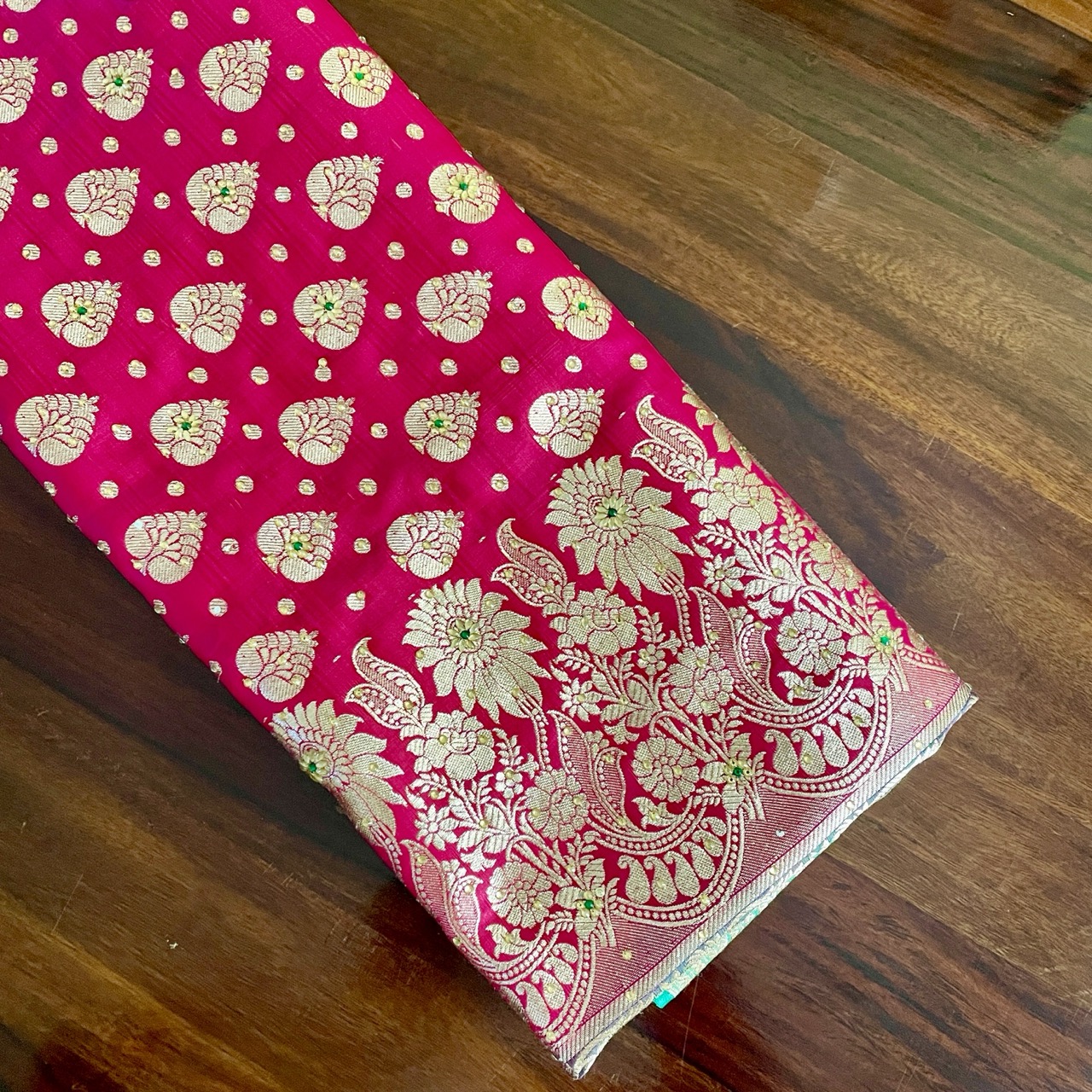Handwoven Banarasi sarees are more than just garments; they are a symbol of grace, luxury, and India’s rich heritage. These beautifully crafted pieces of art, woven by skilled artisans in Varanasi, have captured hearts for centuries. Their intricate designs and exquisite craftsmanship make them truly timeless.
The Origins: A Legacy from Varanasi
Banarasi sarees originated in the ancient city of Varanasi, also known as Kashi. Weaving these sarees began during the Mughal era when Persian art influenced Indian textiles. The fusion of Persian and Indian aesthetics introduced floral designs, intricate brocade work, and detailed patterns like kalga and bel, which are still prominent today.
The process of creating a Banarasi saree is time-intensive and laborious. It can take weeks, or even months, to complete a single saree. Artisans use silk threads intertwined with gold or silver to weave these intricate patterns, making each saree a work of art.
Cultural Significance: A Saree with Meaning
Banarasi sarees have held immense cultural importance in Indian weddings and festivals. They are a favorite choice for brides, especially in rich shades of red or maroon. The saree’s intricate zari work symbolizes prosperity, purity, and a lasting bond.
This saree is not just worn for its beauty. It often becomes a family heirloom, passed down through generations. Each Banarasi saree carries stories of tradition, making it a treasured possession in many Indian households.
Why Banarasi Sarees Are Still in Style
Despite evolving fashion trends, Banarasi sarees have retained their status as timeless classics. Fashion icons, designers, and celebrities frequently showcase these sarees at events, ensuring they remain popular.
Brides today are blending tradition with modern styles. Many prefer pairing a Banarasi saree with minimalist jewelry, letting the saree’s beauty take center stage. The versatility of Banarasi sarees allows them to be draped in traditional or contemporary ways.
Artisans Behind the Craft: Keeping Tradition Alive
Every Banarasi saree tells the story of the artisan who wove it. Handloom weavers spend hours working on their looms, ensuring each design is perfect. The handloom industry in Varanasi is critical to preserving India’s textile heritage.
However, these artisans face challenges with the rise of machine-made imitations. Supporting handwoven Banarasi sarees helps keep this ancient craft alive and provides livelihoods for skilled weavers.
Conclusion
The beauty of handwoven Banarasi sarees lies not just in their appearance, but in their deep roots in history and culture. Worn for weddings, festivals, and as heirlooms, these sarees represent the elegance and craftsmanship of Indian tradition.








